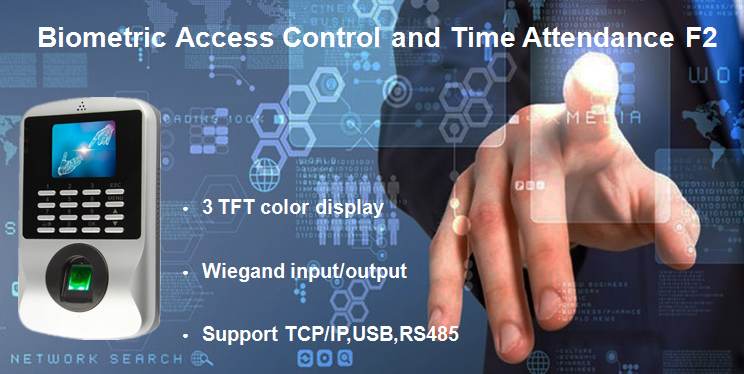6-20 个字符(仅限字母加数字)
密码不一致


Biometric/Fingerprint Access Control wholesale,supplier,OEM,factory,exporter
The so-called biometric technology is the close combination of computers and high-tech methods such as optics, acoustics, biosensors, and biostatistics, and the use of inherent physiological characteristics of the human body (such as fingerprints, facial features, red membranes, etc.) and behavioral characteristics (such as handwriting, voice, gait, etc.) for personal identification.

Traditional identification methods include identification items (such as keys, certificates, ATM cards, etc.) and identification knowledge (such as user names and passwords). However, because they mainly rely on external objects, once the identification items and identification knowledge that prove the identity are stolen or forgotten, Its identity can easily be impersonated or replaced by others. Biometric/fingerprint access control can deal with these problems perfectly.
Working principle
Fingerprints are lines on the front skin of human fingers that are regularly arranged but not identical. The points formed by the interruption, bifurcation or turning in the fingerprint are the minutiae feature points, and these minutiae feature points provide the confirmation information of the uniqueness of the fingerprint. The fingerprint recognition sensor records the direction of the fingerprint pattern and digitizes it to form a unique key and unlock it. At present, there are two main ways for fingerprint locks to collect fingerprints, optical and capacitive (semiconductor).
☑️Optical
The optical fingerprint head obtains fingerprint information by calculating the different distances between the ditch and ridge of the fingerprint and the collection window. When the finger is sweaty or the collection window has moisture, it will affect the transmission and distance of the light, causing the obtained fingerprint information is wrong with the original stored information, so fingerprint lock identification fails;
☑️Capacitive
Capacitive (semiconductor) fingerprint recognition sensors are plated with long and narrow electrodes around the fingerprint sensor. When the finger presses the fingerprint collection window, since the human body is an electric field, the fingerprint lines of the user and the surface of the sensor will form a coupling capacitor. In other words, the capacitor is a direct conductor, so the finger will draw a small current from the contact point. This current flows from the peripheral electrodes, and the current flowing through the peripheral electrodes is proportional to the distance from the fingerprint to the periphery. The controller obtains the touch pattern-related data by accurately calculating the current ratio. Since water is conductive, when fingerprint recognition is used when the finger is sweaty or the collection window is stained, the current will be affected, so the above calculation is inaccurate. Compared with optics, it should be more advanced. .
The merits of biometric/fingerprint access control
Biometrics is more secure, confidential and convenient than traditional identification methods. Biometric identification technology has the advantages of being hard to forget and good anti-counterfeiting performance, being hard to forge or being stolen, "carrying" with you, and being usable anytime and anywhere.
Since the human body features are inherently non-copyable and unique, this biological key cannot be copied, stolen or forgotten. The use of biological identification technology for identity verification is safe, reliable and accurate. However, common passwords, IC cards, stripe codes, magnetic cards or keys have many disadvantages such as loss, forgotten, copying and embezzlement. Therefore, with biological "keys", you don't need to carry a large bunch of keys, and you don't have to bother to memorize or change passwords. And the system administrator does not have to be at a loss because of forgetting the password. Biometric technology products are all realized with the help of modern computer technology, which is easy to integrate with computers and security, monitoring, and management systems to achieve automated management.
Application of biometric/fingerprint access control
Biometrics technology can be widely used in government, military, bank, social welfare, e-commerce, security and defense. For example, a depositor walks into a bank, and he does not bring a bank card, nor does he recall the password. When he withdraws at the cash machine, a camera scans the user’s eyes and then quickly and accurately The user identification is completed and the business is completed. This is a real shot that happened in a business department of the United Bank of Texas in the United States. And what the business department uses is the "iris recognition system" in modern biometric technology. After the 9/11 incident in the United States, anti-terrorism activities have become the consensus of the governments of all countries, and it is very important to strengthen the security and defense of airports. The facial recognition technology of the US Visag company has shown its magic in two airports in the United States. It can pick out a certain face in a crowded crowd to determine if he is a wanted criminal.
We are Biometric/Fingerprint Access Control wholesale, supplier, OEM, factory, exporter, if you have any interest in it, please just feel free to contact us.

